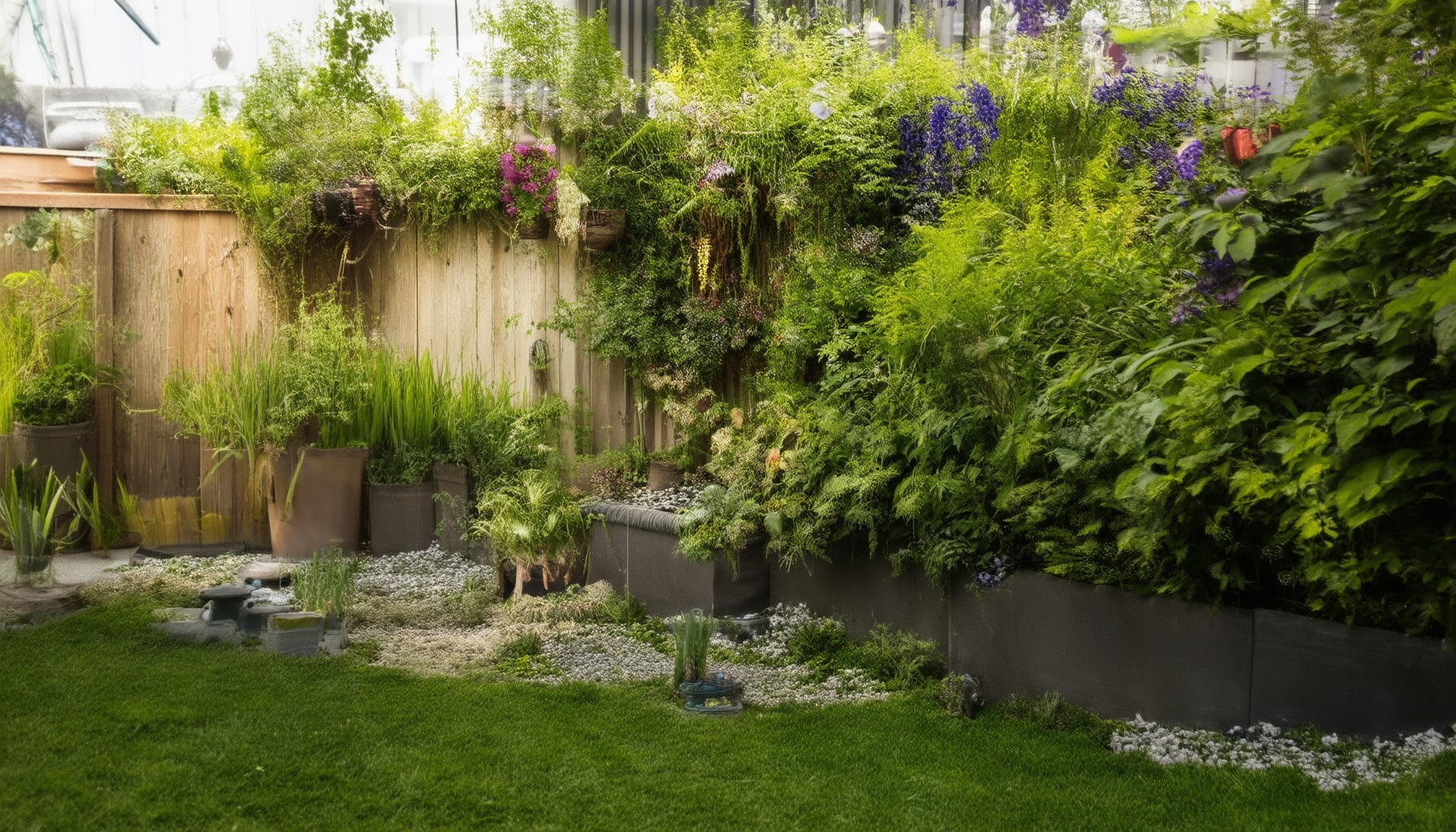Transforming your garden into a space that’s both beautiful and functional doesn’t have to be expensive or overwhelming. With DIY garden projects, you can unlock endless possibilities to create a personalized outdoor retreat, whether you’re working with a small space or aiming for maximum impact. From laying out a garden for beginners to designing low-maintenance setups, there’s a project for every skill level and budget. Discover how to repurpose household items, explore affordable container gardening ideas, and learn the secrets to creating a water-wise garden. Whether you’re looking to save money or simply want to add unique touches to your yard, these DIY projects offer a fresh perspective and provide practical solutions for every aspect of your gardening journey. Get ready to inspire yourself and bring your garden to life with simple, creative, and budget-friendly ideas that anyone can tackle.
Key Takeaways
– Affordable Garden Coverings: Opt for gravel, mushroom compost mulch, or pebbles to achieve a neat, low-maintenance look while staying within budget.
– Low-Maintenance Grasses: Choose drought-tolerant grasses like buffalo grass for resilient, water-efficient ground cover.
– Budget-Friendly Options: White clover and thyme are cost-effective ways to enhance soil health and aesthetics.
– Grass Alternatives: Consider artificial turf for a realistic, low-maintenance lawn or ground covers for quick coverage.
– DIY Solutions for Dirt: Use mulch, gravel paths, or raised planters to transform and beautify your outdoor space efficiently.

How to Layout a Garden for Beginners
Planning and organizing your garden layout is the first step to creating a successful outdoor space. Here’s a simple guide to help you get started:
1. Plan Your Garden Design
- Measure the Space: Determine the size and shape of your gardening area. This will help you plan the layout effectively.
- Choose Plants Suited to Your Climate: Select crops or flowers that thrive in your local climate and growing conditions.
- Pick a Layout Style: Decide whether you want a traditional row layout, a raised bed, or a container garden.
- Sketch a Layout Plan: Draw a rough sketch of your garden to visualize where each plant or feature will go.
2. Prepare the Soil
- Test the Soil PH Levels: Use a soil test kit to check the acidity or alkalinity of your soil. Most plants prefer a PH level between 6.0 and 8.0.
- Amend the Soil if Necessary: Add organic matter like compost or manure to improve soil fertility and drainage.
- Level and Prepare the Area: Remove rocks, weeds, and debris. Level the ground to ensure proper drainage and airflow.
3. Lay Out the Garden Beds
- Mark the Beds: Use stakes or string to mark the edges of your garden beds.
- Build Raised Beds if Desired: Use wood, stones, or bricks to create raised beds for better drainage and easier access.
- Install Edging: Add edging materials like metal or plastic to keep the soil in place and define the borders of your garden.
4. Plant Your Vegetables or Flowers
- Start with Easy-to-Grow Plants: Choose vegetables or flowers that are suitable for beginners, such as tomatoes, peppers, marigolds, or zinnias.
- Space Plants Appropriately: Follow planting guidelines based on the size and spread of the plants you’ve chosen.
- Use Seedlings or Transplants: Depending on the season, you can start with young plants or grow seeds indoors before transplanting.
5. Water Efficiently
- Set Up a Watering Schedule: Water newly planted plants regularly, but reduce frequency once established.
- Use a Rain Barrel or Drip Irrigation System: These methods save water and ensure consistent hydration for your plants.
- Mulch to Retain Moisture: Apply mulch around your plants to conserve water and suppress weed growth.
6. Maintain Your Garden
- Regular Weeding: Keep unwanted plants under control to allow your desired plants to thrive.
- Fertilize as Needed: Apply fertilizer during the growing season to promote healthy plant growth and abundant harvests.
- Protect from Pests: Use natural methods like compost or neem oil to deter pests instead of harmful chemicals.
- Seasonal Tasks: Prune plants, harvest produce, and prepare the soil for the next growing season as needed.
By following these steps, you’ll create a thriving garden that’s both beautiful and productive. Happy gardening!
What is the Most Low Maintenance Garden?
-
Gravel Gardens
A gravel garden is an excellent choice for those seeking low-maintenance landscaping. By replacing traditional lawns with drought-tolerant plants and gravel, you reduce the need for frequent watering and mowing. Once established, these plants thrive with minimal care and are perfect for busy lifestyles. Learn more about designing a gravel garden .
-
Xeriscaping
Xeriscaping involves creating a garden that requires less water, making it ideal for arid climates. This method uses native plants that are adapted to local conditions, reducing the need for supplementary irrigation and fertilizers. It’s a sustainable option for eco-conscious gardeners.
-
Container Gardens
Container gardens are highly customizable and require less space and effort to maintain. Choose self-watering pots or containers with drainage holes to minimize maintenance. This is a great option for small spaces or those with limited time.
-
Rock Gardens
Rock gardens offer a unique aesthetic while being low-maintenance. Perennials and succulents are perfect for rock gardens as they thrive in poor soil conditions and require minimal watering. This is a great choice for natural-looking landscapes.
-
Herb Gardens
Herb gardens are not only visually appealing but also practical. Many herbs are drought-tolerant and require little attention. They can be grown in containers or small beds, making them ideal for those who want to enjoy fresh herbs without the hassle of regular maintenance.

How to Make Your Garden Nice on a Budget
To create a beautiful garden without overspending, focus on cost-effective strategies that maximize visual appeal and functionality.
1. Utilize Free Resources
- Native Plants: Choose indigenous plants suited for your climate—they thrive without extra watering or fertilizers.
- Local Seeds/Bulbs: Opt for seeds and bulbs from local nurseries or farmers’ markets, which are often cheaper and better adapted to your area.
- Recycled Decor: Repurpose old pots, bricks, or wooden crates into planters or bird baths for a unique, eco-friendly look.
2. Enhance Soil Health
- Mulch Smartly: Apply straw mulch or dyed wood chips to retain moisture and suppress weeds. Layer newspaper underneath for added weed control (allowing it to decompose over time).
- Prune Regularly: Trim trees and shrubs to improve airflow and sunlight penetration, promoting healthier growth.
- Dethatch Lawn: Remove dead grass and compacted soil to encourage new growth and prevent pests.
3. Add Low-Cost Features
- Rocks and Pathways: Use decorative rocks from local garden centers to define garden beds or create walkways.
- DIY Water Features: Install a small pond or bird bath using repurposed materials for a relaxing, nature-inspired vibe.
4. Manage Weeds and Pests
- Manual Removal: Hand-pull weeds regularly, especially in dry conditions, to reduce their spread.
- Natural Pest Control: Use insecticidal soap or neem oil for common pests, avoiding harsh chemicals.
5. Plan and Organize
- Group Plants Strategically: Create visually appealing clusters to enhance your garden’s symmetry and charm.
- Use Existing Materials: Repurpose gravel or pavers from around your property to minimize costs.
6. Explore Community Resources
- Check for local community gardens where you can access free plants and gain valuable gardening insights.
7. Time Your Projects
- Plant seeds and bulbs during the appropriate season to ensure survival through the upcoming winter months.
By implementing these budget-friendly strategies, you can transform your garden into a charming retreat without breaking the bank. Start with easy projects and gradually tackle more complex tasks to enjoy a beautiful outdoor space.

What is the Cheapest Garden Covering?
Choosing the right garden covering can significantly impact both the appearance and functionality of your outdoor space. Among the various options available, gravel stands out as one of the most economical choices. However, there are several other affordable options that offer unique benefits depending on your needs.
1. Gravel
- Cost: Gravel is generally inexpensive, making it a budget-friendly option for many gardeners.
- Benefits: It provides excellent drainage, reduces weed growth, and creates a neat, tidy look. Gravel is also low-maintenance and long-lasting, making it a practical choice for those on a tight budget.
2. Mushroom Compost Mulch
- Cost: Mushroom compost is often affordable and readily available at local gardening centers.
- Benefits: It retains moisture, suppresses weeds, and improves soil health over time. It’s lightweight and easy to apply, making it a great option for small gardens.
3. Pebbles
- Cost: Pebbles are usually priced similarly to gravel and often come in smaller bags, making them a cost-effective choice.
- Benefits: They are lightweight, easy to install, and come in various colors and sizes. Pebbles are a good choice for areas with limited access or for creating a decorative path.
4. Low-Maintenance Grasses
- Cost: While initial planting may vary, drought-tolerant grasses like buffalo grass are known for their affordability and resilience.
- Benefits: Once established, they require less watering and maintenance, making them ideal for budget-conscious gardeners who want a natural look.
5. White Clover and Thyme
- Cost: These are both budget-friendly options for creating a green ground cover.
- Benefits: White clover is known for its ability to fix nitrogen in the soil, while thyme is hardy and adds a charming aesthetic to your garden.
Conclusion
When selecting the cheapest garden covering, consider factors like your budget, preferred look, and maintenance requirements. Gravel, mulch, pebbles, and low-maintenance grasses are all excellent options that fit various budgets. For more ideas on transforming your garden, check out our guide on garden ideas .
Grass Alternatives for Your Lawn
If you’re looking for a low-maintenance alternative to traditional grass, consider these options:
- Artificial Turf : A popular choice for its realism and ease of care. It requires no mowing and is drought-resistant. Check local retailers or online platforms for installation costs and availability.
- Ground Covers : These fast-growing plants spread quickly, covering large areas with minimal effort. Choose varieties suited for your soil type and sunlight conditions.
- Stone or Gravel Paths : Create defined walkways or seating areas with durable materials that reduce maintenance and add a sleek look.
- Decorative Bark : This mulch alternative adds aesthetic appeal and suppresses weeds. It’s long-lasting but may need annual replenishment depending on your location.
- Patio Pavers : For a permanent, weather-resistant surface, patio pavers offer a clean, modern appearance. Consider cost versus other options for your budget.
- Mulch : Enhance your existing landscape by applying mulch around trees or shrubs to retain moisture and deter weeds, requiring less frequent maintenance.
- Water-Saving Solutions : Implement soaker hoses or drip irrigation systems to support your chosen ground cover options, ensuring efficient water usage.
Evaluate your climate, budget, and lifestyle to select the best fit for your needs. Combining options like artificial turf with ground cover can offer a balanced, low-maintenance solution tailored to your preferences.

What to Put Over Dirt?
If you’re looking to cover dirt in your backyard, there are several effective and affordable options to consider. Here are some practical solutions:
- Mulch: Apply organic mulch like straw, wood chips, or leaf mold to suppress weeds, retain moisture, and improve soil health. Mulch also adds a neat appearance to your yard.
- Gravel or Stone Paths: Create defined walking areas by laying down gravel or stone. This option is durable, easy to install, and can be decorative.
- Tarping: Use a tarp to quickly cover large areas of dirt. While it’s temporary, it can protect the ground from weather damage until you’re ready to plant or landscape.
- Planters or Raised Beds: Transform dirt into a functional garden space by building raised beds or planters. These structures allow you to grow plants and flowers while keeping the area tidy.
- Lawn Tiles or Pavers: Install decorative tiles or pavers to cover small sections of dirt. These options are long-lasting and can add a polished look to your outdoor space.
- Leaves or Hay: Spread layers of leaves or hay over small patches of dirt to mask imperfections. This eco-friendly option also helps enrich the soil over time.
- Sod Rolls: Lay sod rolls over bare dirt to create a lush, green lawn. Sod is an excellent choice for areas that need immediate coverage and can handle foot traffic.
- Sealing the Surface: For uneven dirt surfaces, you can seal them with a polymer-based product like polyurethane. This method smooths out irregularities and creates a more uniform appearance.
- Artificial Turf: Consider installing artificial turf for a low-maintenance solution. It’s perfect for high-traffic areas and comes in various shades and textures to match your decor.
Each of these options has its own advantages, so choose based on your specific needs and budget. For more detailed instructions on applying mulch, laying gravel paths, or setting up raised beds, check out our comprehensive Mulching Guide and Gravel Path Installation Guide .





0 Comments